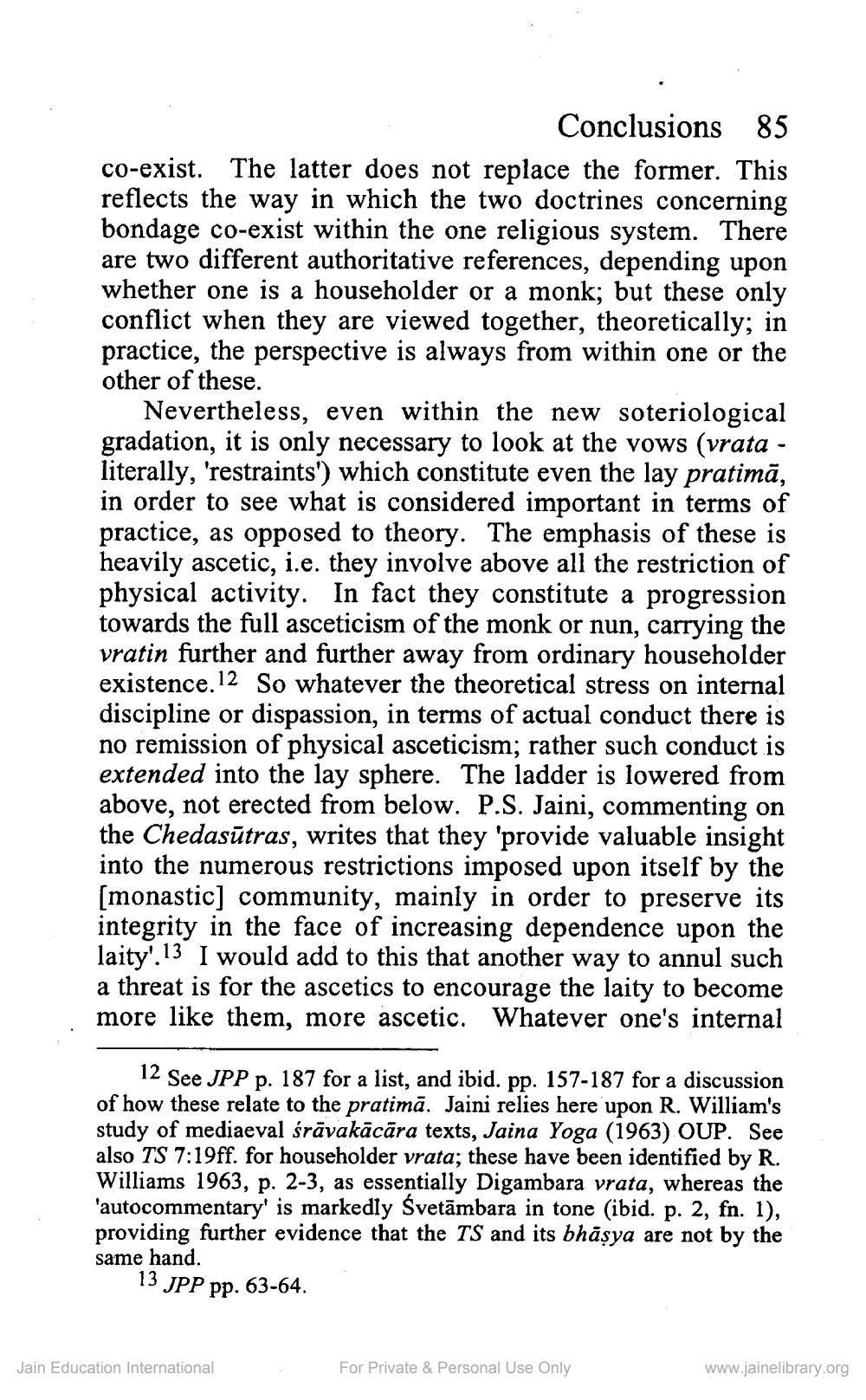________________
Conclusions 85 co-exist. The latter does not replace the former. This reflects the way in which the two doctrines concerning bondage co-exist within the one religious system. There are two different authoritative references, depending upon whether one is a householder or a monk; but these only conflict when they are viewed together, theoretically; in practice, the perspective is always from within one or the other of these.
Nevertheless, even within the new soteriological gradation, it is only necessary to look at the vows (vrata - literally, 'restraints') which constitute even the lay pratimā, in order to see what is considered important in terms of practice, as opposed to theory. The emphasis of these is heavily ascetic, i.e. they involve above all the restriction of physical activity. In fact they constitute a progression towards the full asceticism of the monk or nun, carrying the vratin further and further away from ordinary householder existence.12 So whatever the theoretical stress on internal discipline or dispassion, in terms of actual conduct there is no remission of physical asceticism; rather such conduct is extended into the lay sphere. The ladder is lowered from above, not erected from below. P.S. Jaini, commenting on the Chedasūtras, writes that they 'provide valuable insight into the numerous restrictions imposed upon itself by the [monastic] community, mainly in order to preserve its integrity in the face of increasing dependence upon the laity'.13 I would add to this that another way to annul such a threat is for the ascetics to encourage the laity to become more like them. more ascetic. Whatever one's internal
12 See JPP p. 187 for a list, and ibid. pp. 157-187 for a discussion of how these relate to the pratimā. Jaini relies here upon R. William's study of mediaeval śrāvakācāra texts, Jaina Yoga (1963) OUP. See also TS 7:19ff. for householder vrata; these have been identified by R. Williams 1963, p. 2-3, as essentially Digambara vrata, whereas the 'autocommentary' is markedly Śvetāmbara in tone (ibid. p. 2, fn. 1), providing further evidence that the TS and its bhāşya are not by the same hand.
13 JPP pp. 63-64.
Jain Education International
For Private & Personal Use Only
www.jainelibrary.org




